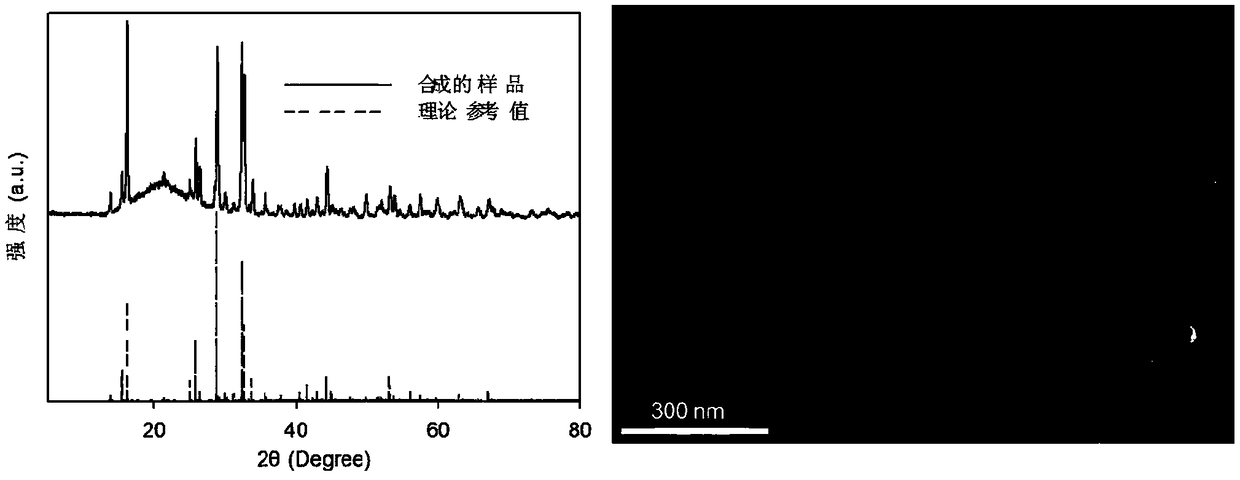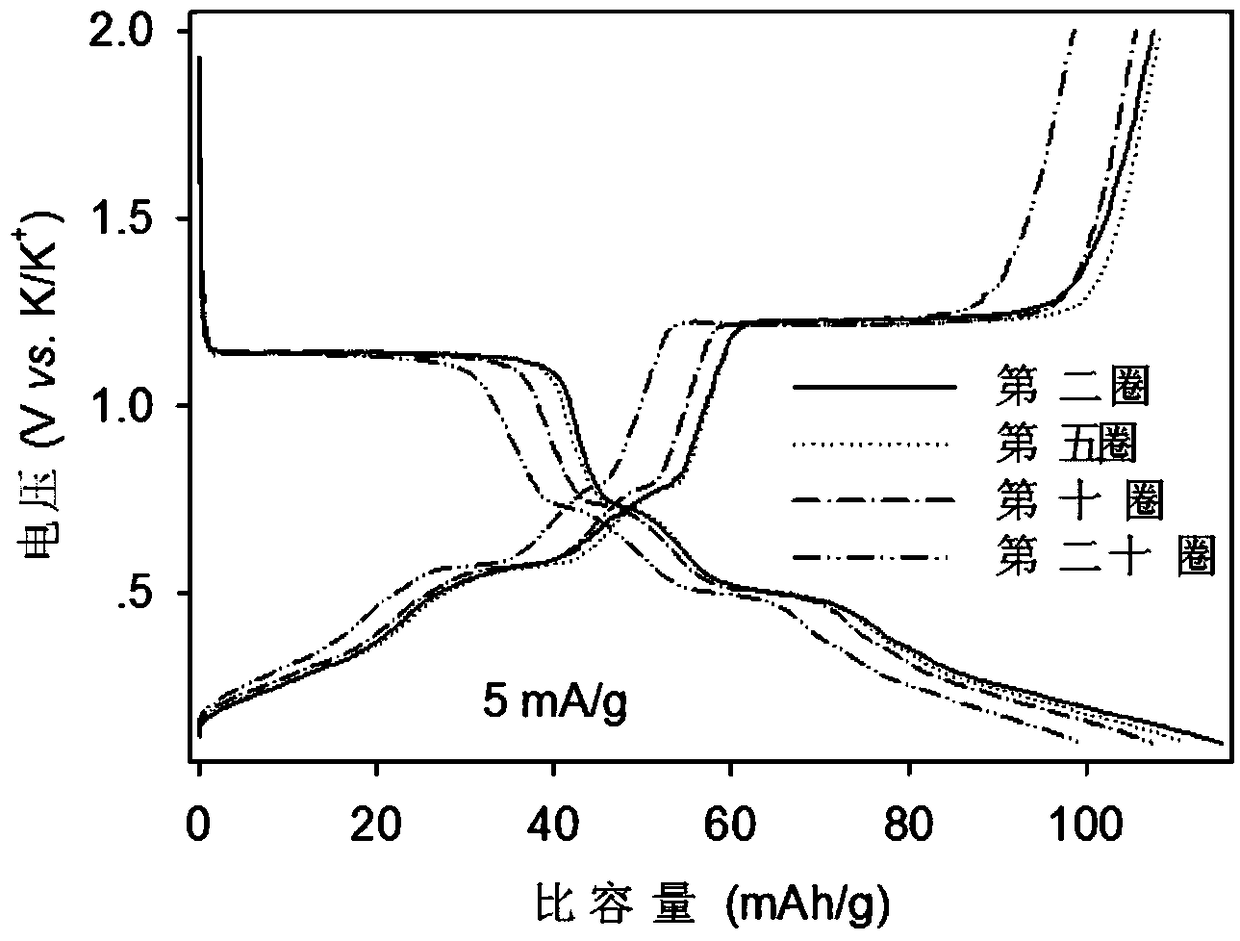Potassium titanyl phosphate negative electrode material for potassium ion secondary battery
A technology of potassium titanyl phosphate and secondary battery, applied in secondary batteries, battery electrodes, circuits, etc., can solve the problem of small overpotential polarization charging and discharging Coulomb efficiency, high charging and discharging platform potential, unstable charging and discharging platform, etc. problem, to achieve the effects of excellent cycle and rate performance, stable charge-discharge potential platform, and high safety
- Summary
- Abstract
- Description
- Claims
- Application Information
AI Technical Summary
Problems solved by technology
Method used
Image
Examples
Embodiment 1
[0026] This example shows a synthesis method of a carbon-coated potassium titanyl phosphate negative electrode material.
[0027] The carbon-coated potassium titanyl phosphate negative electrode material is synthesized by a high-temperature solid-state method, including the following steps:
[0028] a. Weigh 239.61 mg (3 mmol) of titanium dioxide powder and 408.27 mg (3 mmol) of potassium dihydrogen phosphate powder according to the stoichiometric ratio of 1:1, and mix them fully and uniformly through mechanical grinding;
[0029] b. Weigh 59.38 mg of acetylene black powder and add it to the mixed powder in step a, and then mechanically grind the new mixture to fully mix it evenly, and finally obtain the precursor powder required for the synthesis of potassium titanyl phosphate negative electrode material;
[0030] c. Place the precursor powder prepared in step b in a corundum crucible, then put it into a tube furnace protected by an argon inert atmosphere, and heat it for 12 ...
Embodiment 2
[0035] This example shows a potassium ion secondary battery with carbon-coated potassium titanyl phosphate as the negative electrode.
[0036] The composition of the negative electrode material of the potassium ion battery (assuming that the mass fraction of the negative electrode material is 100%): carbon-coated potassium titanyl phosphate accounts for 80% by weight, conductive carbon black and sodium carboxymethyl cellulose each account for 10% by weight.
[0037] Both the counter electrode and the reference electrode of the potassium ion battery are metal potassium foils.
[0038] The formula of the electrolytic solution is as follows: the solvent is diglyme; the potassium salt of the electrolyte is potassium bis(trifluoromethylsulfonyl)imide, and the concentration of the substance in the electrolytic solution is 5 mol / L.
[0039] Negative electrode sheet preparation method: Weigh each raw material according to the above-mentioned negative electrode composition ratio, unifo...
PUM
| Property | Measurement | Unit |
|---|---|---|
| diameter | aaaaa | aaaaa |
Abstract
Description
Claims
Application Information
 Login to View More
Login to View More - R&D
- Intellectual Property
- Life Sciences
- Materials
- Tech Scout
- Unparalleled Data Quality
- Higher Quality Content
- 60% Fewer Hallucinations
Browse by: Latest US Patents, China's latest patents, Technical Efficacy Thesaurus, Application Domain, Technology Topic, Popular Technical Reports.
© 2025 PatSnap. All rights reserved.Legal|Privacy policy|Modern Slavery Act Transparency Statement|Sitemap|About US| Contact US: help@patsnap.com



